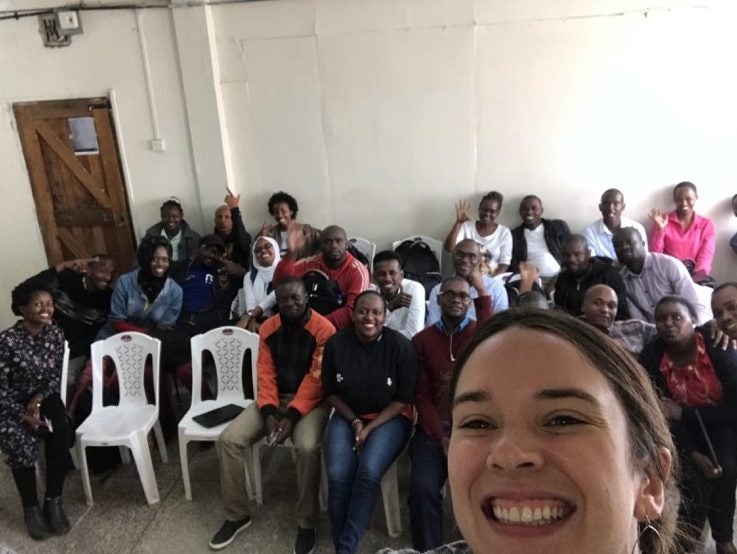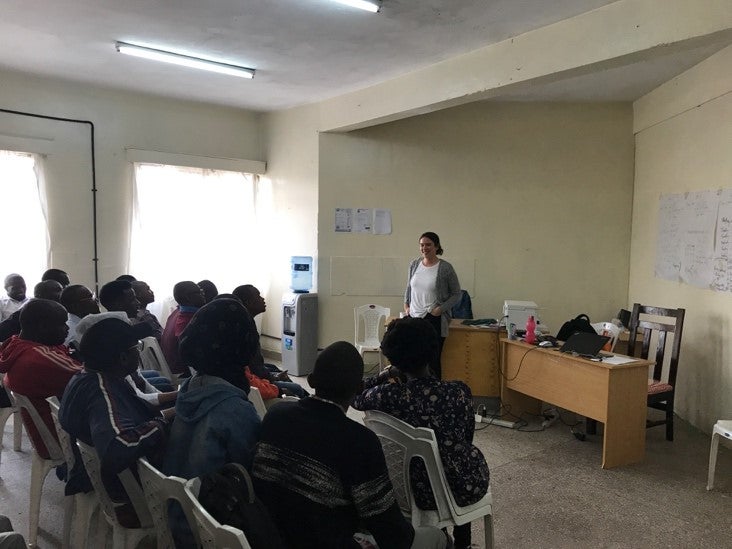Devin Olmack

Here is a short list of the financial transactions I make in one day in Nairobi — In the morning, I buy a coffee at coffee shop around the corner from the office. Then I hop on a boda (motorcycle taxi) to another office 30 minutes away. A coworker and I go to lunch at a small street corner restaurant and eat some mukimo (potatoes), ugali (cornmeal), Sukuma (collard greens), Nyama Choma (BBQ), and sugar cane juice. Meanwhile, a friend calls and needs to borrow some cash urgently. I hop on a boda back to the main office where I finish up some work. After work, I go to a local restaurant with live music for a dawa (ginger and lemon tea) with coworkers. At this moment, you most likely think this is a pointless description of my day, but in fact, it proves the reality of digital financial inclusion in Nairobi. Throughout the day, all these activities require financial transactions and I do them all through my phone. Let me repeat, all these financial transactions are completed on my phone.

This is all made possible thanks to M-Pesa (Pesa means ‘money’ in Swahili). M-Pesa is a mobile money transfer service that has revolutionized the digital financial inclusion landscape in Keyna. M-Pesa allows you to transfer money and pay for goods and services on any mobile platform. Kenya is one of the world’s leaders in mobile money services, a milestone attributed to M-Pesa pioneered by Safaricom around 12 years ago. In 2006, only 14 percent of the Kenyan population had formal or informal bank accounts. By 2017, 81.6 percent of adults had a formal account allowing them to save, send or receive money. A study done by Tavneet Suri and William Jack found that in areas where M-Pesa has expanded, the number of households living in poverty has dropped. This statistic is driven primarily by female-headed households. And most of these drops in poverty were complemented with a shift in women’s occupations from farming to business and retail occupations. Digital Financial Inclusion promotes growth, economic development, and financial deepening.
This summer I am working with the Georgetown University Initiative on Innovation, Development, and Evaluation (gui2de) in Nairobi, Kenya as a Digital Financial Inclusion Research Assistant. My work has centered on two of gui2de’s projects that work to evaluate the expansion of digital financial services in partnership with Kenyan banks. The first project is a stock financing application for small and medium enterprises where I primarily worked with the data collection team to record quality data for the evaluation. The second project was an auto-savings application for tea farmers in Murang’a County who receive a bi-annual bonus that must be used as a monthly salary. For this project, I worked on the research design and product development. These two projects ensure the most vulnerable populations can borrow in times of need or save for the future, essential stepping stones on the path to economic development.

I am writing this blog post on the last day of my summer internship at gui2de and coincidentally, the same day that the auto-savings application for tea farmers passed quality assurance testing and completed the product development stage, a feat I never thought I would see. Next week, the team will move to Murang’a where they will train field officers on the auto-savings application and data collection. The following week, the application will go live and be available for use by tea farmers. While this is a giant success, I can’t help but sit here and reflect, will the auto-savings application do everything it promises to and smooth consumption, balancing spending and saving, of tea farmers? This question is the exact reason I value impact evaluation. I spent the majority of my summer internship working on product development for a product I am not even sure will work, and that is okay. Why would I want a product to be used on a large scale, intended for some of the most vulnerable populations, if it reaps no benefit? What if there is a better auto-savings product out there? There are millions of new technologies in the development sphere intended to reduce poverty and spur economic growth, but do half of them even work? Development organizations must do a better job at evaluating innovations and products before millions of dollars are spent on interventions that do not contribute to development. Furthermore, we, as development professionals, must be okay when an impact evaluation shows an intervention does not achieve its goals, even though it is uncomfortable and feels like a failure. Instead, diligent, precise, and comprehensive impact evaluation should be regarded as a success, no matter the outcome. That may be the most valuable lesson I learned this summer.
